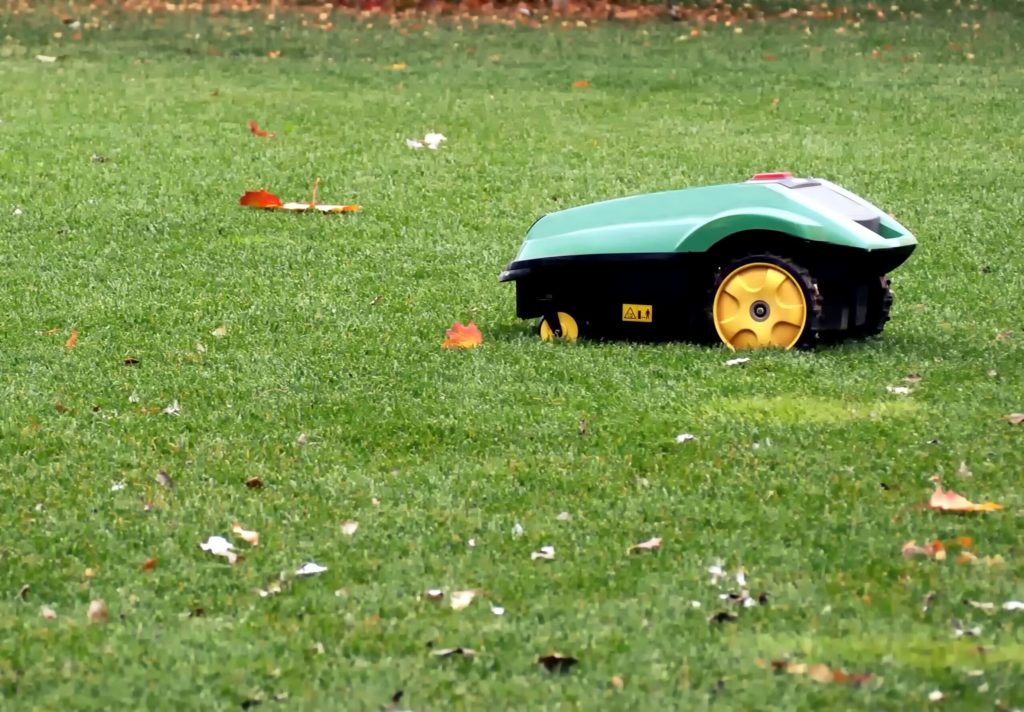- Free delivery over £195
- Delivery to UK & Ireland
- [email protected]
- 01366 500 828
- Manage my robot
Not only does a robot mower complete one of the most mundane tasks associated with grounds maintenance, but it does so in a way which delivers consistent quality and a neat cut every time.
All of that is completed remotely, effectively, and within the time frame determined as part of your initial programming.
Suffice to say, there are a great many benefits of investing in a robot mower. But one question that many customers have is year-round usage – specifically what the function of a robot mower is during the winter months. Can a robot mower be used when it’s cold – and if so, what can you do to protect it?
In order to answer this, you need to first understand a little more about the different parts of a robot mower and how they all work together.
A robot mower is a small and self-contained unit, with rotating blades which are programmed into an app and can be controlled and set at a specific cutting height and density by the user.
One of the standout features of a robot mower is the sensors which enable it to identify rain, obstacles on the lawn ahead, and other challenges. One of these is a temperature sensor which ensures that the mower can read the temperature and determine whether the outside conditions are suitable for mowing.
Robot mowers are, if you hadn’t already realised, incredibly smart. Operating within the boundaries of a 0-50 degree scale for most models, any temperature that falls below or above these boundaries will usually mean that the mower won’t start. This is a protective measure that prevents the unit from becoming damaged by unstable conditions and environments.
Different areas of the world experience vastly different conditions during the winter. If your winters are mainly composed of rain and some light frost, then you might find that your robot mower will be able to operate on some days and should be kept inside on other days.
Low temperatures can cause the battery on a robot mower to drain more quickly and can even cause lasting damage to the battery – while overheating damages the unit and its charging port.
What we’re trying to tell you is that it depends on your winter conditions, as to whether your robot mower will work. In the UK, we tend to recommend that robot mowers are safely stored away for the majority of the winter, not only to protect the mower itself but also to give the lawn a break and time to recover and rejuvenate for spring.
As we mentioned earlier, most robot mowers will not operate outside the temperature zone of 0-50 degrees Celsius.
The temperature sensor attached to your robot mower will ensure that it doesn’t try to operate outside of these main temperature boundaries. If it’s too cold, your mower’s self-preservation system will stop it from switching on and heading out onto the lawn.
The biggest piece of advice we share with most clients and customers is to use the winter as a time to service, clean, and give their robot mower a rest.
These pieces of equipment take time and care to service and maintain, with the winter months providing a good opportunity to undertake tasks like switching the blades and performing a thorough cleaning of the full unit. Your mower will then be ready to put back into action come the spring.
We hope this helps. For more advice and tips on caring for your robot mower, don’t hesitate to get in touch with the Groundtech team.

Based in Norfolk and Suffolk, GroundTech supplies and installs commercial robot mowers and outdoor robotics across the UK. We support golf courses, sports clubs, schools, councils, large private estates and homeowners – backed by over 20 years of turf care and automation expertise.